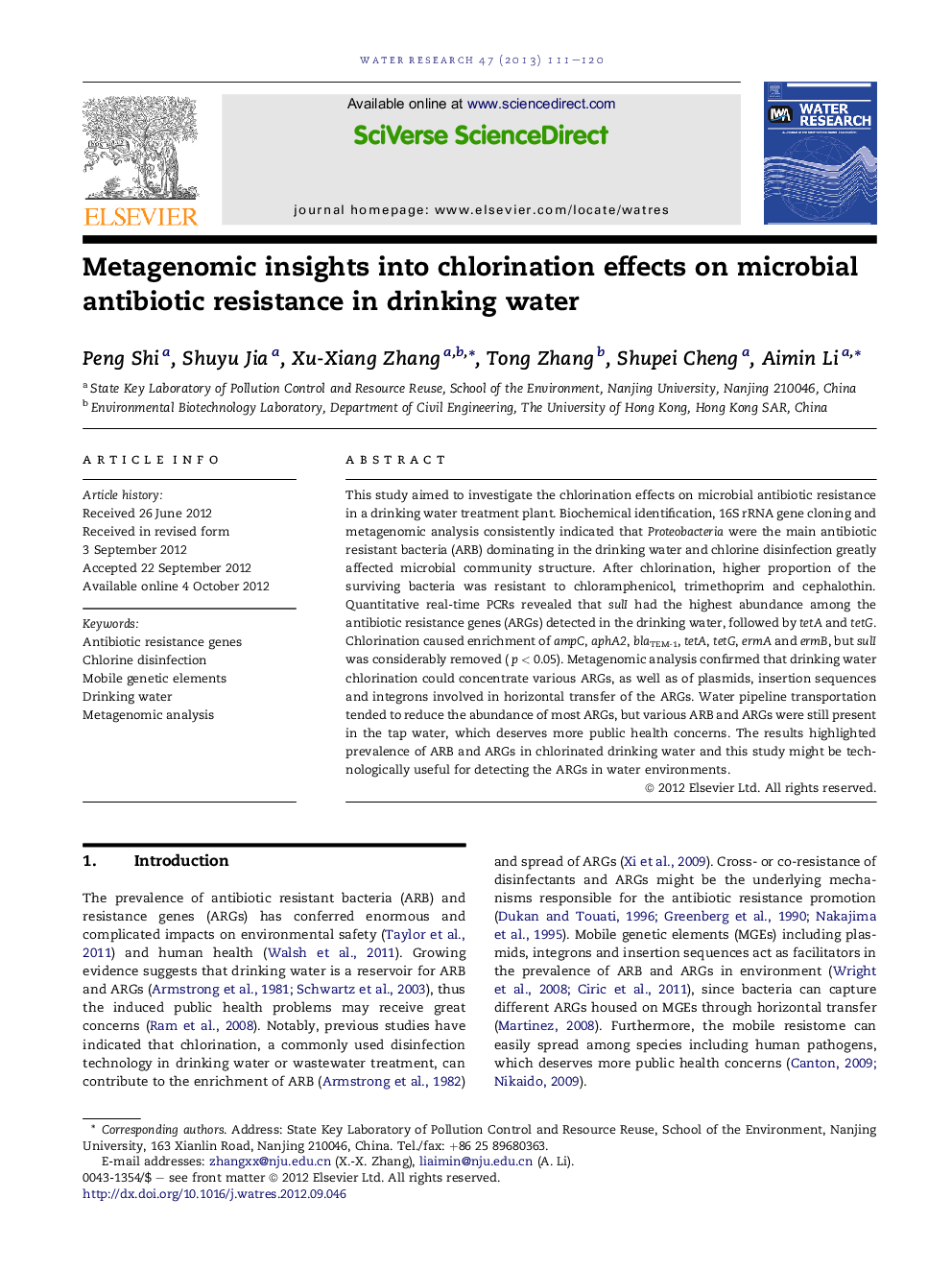| Article ID | Journal | Published Year | Pages | File Type |
|---|---|---|---|---|
| 4482520 | Water Research | 2013 | 10 Pages |
This study aimed to investigate the chlorination effects on microbial antibiotic resistance in a drinking water treatment plant. Biochemical identification, 16S rRNA gene cloning and metagenomic analysis consistently indicated that Proteobacteria were the main antibiotic resistant bacteria (ARB) dominating in the drinking water and chlorine disinfection greatly affected microbial community structure. After chlorination, higher proportion of the surviving bacteria was resistant to chloramphenicol, trimethoprim and cephalothin. Quantitative real-time PCRs revealed that sulI had the highest abundance among the antibiotic resistance genes (ARGs) detected in the drinking water, followed by tetA and tetG. Chlorination caused enrichment of ampC, aphA2, blaTEM-1, tetA, tetG, ermA and ermB, but sulI was considerably removed (p < 0.05). Metagenomic analysis confirmed that drinking water chlorination could concentrate various ARGs, as well as of plasmids, insertion sequences and integrons involved in horizontal transfer of the ARGs. Water pipeline transportation tended to reduce the abundance of most ARGs, but various ARB and ARGs were still present in the tap water, which deserves more public health concerns. The results highlighted prevalence of ARB and ARGs in chlorinated drinking water and this study might be technologically useful for detecting the ARGs in water environments.
Graphical abstractFigure optionsDownload full-size imageDownload high-quality image (164 K)Download as PowerPoint slideHighlights► Metagenomic analysis reveals prevalence of antibiotic resistance genes in drinking water. ► Chlorination helps to concentrate antibiotic resistance genes in drinking water. ► Pipeline transportation can alleviate antibiotic resistance in the chlorinated water.
